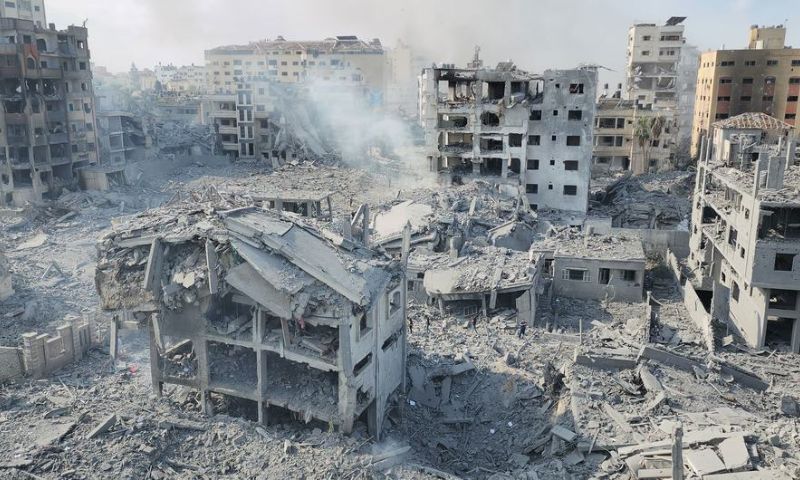GENEVA: More than half of Gaza’s cultivated land, crucial for feeding the war-hit Palestinian territory’s hungry population, has been damaged by conflict, according to satellite images evaluated by the United Nations.
The data shows an increase in the destruction of orchards, vegetables and field crops in the Palestinian enclave, where hunger is on the rise after eight months of Israeli bombardment.
The World Health Organization (WHO) has warned that many people in Gaza are facing famine-like conditions and catastrophic hunger.
After using satellite imagery taken between May 2017 and 2024, United Nations Satellite Center (UNOSAT) and the UN Food and Agriculture Organization (FAO) noted that 57 percent of Gaza’s permanent crop fields essential for food security had shown a significant decline in density and health.
UNOSAT on Thursday said that in May 2024, crop health and density across Gaza showed a massive decline compared to the average of the last seven seasons.
It said this deterioration is because of conflict-related activities, including razing, bombing, shelling and heavy vehicle movement.
UNOSAT said it marked a 30 percent increase in damaged agricultural land since it published its last report in April.
According to Gaza health authorities, Israel’s relentless bombardment has killed more than 37,232 people in Gaza, mostly women and children. The bombardment also caused mass destruction and cut off routes for humanitarian assistance.
WHO Director-General Tedros Adhanom Ghebreyesus has said there are more than 8,000 children under five years old in Gaza who have been treated for severe malnutrition.
UNOSAT said as well as damage to agricultural lands, greenhouses across the Gaza Strip have also sustained significant damage.
The war-hit Gaza Strip has an estimated 151 square kilometers of agricultural land, which is about 41 percent of the enclave’s territory, according to data from UNOSAT.
























